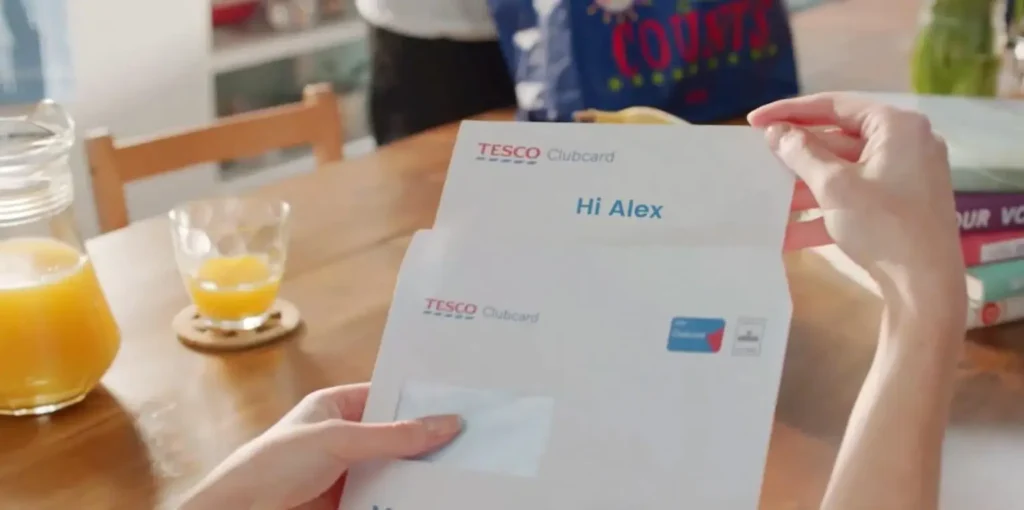With Gen Z predicted to be “the most disruptive generation ever,” understanding this demographic is a top priority for many brands and agencies.
A new study suggests that Gen Z is on track to be the richest generation in history, partly due to baby boomers passing down their assets to the younger generation. By 2040, this cohort’s global spending power is predicted to hit a whopping $74 trillion.
Born between the late 1990s and the early 2010s, Gen Z is also known to spend more than previous generations. Shaped by financial uncertainty and a YOLO (You Only Live Once) mentality, they spend twice as much as they save.
Experts believe that this mix of rising wealth and high spending levels will quickly position Gen Z as a major economic force over the next decade. So what is the most effective way to reach this target audience? The headline probably gave it away.
Take a look at the video below and try to imagine it in text form instead.
Did it work — can you think of a way to share the excitement of the video above in a few sentences or even several paragraphs? Probably not.
There’s a reason video has risen as the most popular form of media on the internet, particularly with Generation Z. From simply being easy to understand to promoting authenticity, here are 5 reasons why you should use video to reach Gen Z, plus examples for how to do it.
1. Meet the Digital Natives
Gen Z is the first generation to be true digital natives. For as long as they can remember, they’ve been immersed in a world of websites and apps. With personal devices at their fingertips, online content and social media are easily their entertainment of choice. And the most popular form it comes in? Video.
When it comes to where they spend their time, Gen Z is most likely to be found on video-focused platforms:
- Over 80% of Gen Z spend time on YouTube, making it the most-used platform for this tech-savvy cohort. Instagram (75%) and TikTok (69%) are close behind.
- 53% of Gen Z prefer to get their news from modern sources, including YouTube (73%), Instagram (59%) and TikTok (55%)
- Gen Zers consume an average of 6.6 hours of content per day and are the most likely to consume 15 or more hours per day. In contrast, millennials spend an average of 6.3 hours each day, and Gen X spend an average of 5.8 hours.
When faced with the idea of a media platform disappearing, the generation picked video as the one that they would miss the most, above gaming, social media, digital music and Google Search.
Undeniably, video is an indispensable part of their daily lives. Short-form video, in particular, has taken center stage. TikTok, Instagram Reels and YouTube Shorts have skyrocketed in popularity, with Gen Z favoring quick, engaging clips over long-form content.
With so much content competing for their attention, it’s perhaps unsurprising that they have fairly short attention spans, at least compared to older generations. Talker Research found that the average American’s attention span lasts 44.4 minutes — but Gen Z’s attention span is even shorter at 40.4 minutes.
For marketers, this means that snackable, visually engaging content will be one of the best ways to capture Gen Z’s interest. If a video doesn’t hook them within the first few seconds, they’re already swiping to the next one.
2. Visual Culture Now Dominates
The last decade or so has seen the rise of a visual online culture. This means a text-dominated internet has evolved into one where visual media rules.
This new culture can be seen through the popularity of social media platforms but has also manifested itself in developments like Animojis or the use of GIFs. Spending so much time online, Gen Z is constantly looking for ways to bridge the digital gap and have their online activity reflect the richness of in-person interactions.
Post on
Combining visuals, audio and text, video has emerged as one of the go-to tools for this. After all, why type out how you feel when you can show it with a viral reaction clip? Why send photos of a new product or service when you can share a video that walks future customers through the experience?
With Gen Z constantly using video to communicate themselves, it’s a no-brainer that brands and organizations need to start speaking the same language. When it comes to communicating with your customers, find opportunities where video can better serve your goal.
For example, it’s great at making complex info simple. Getting a mortgage can be a confusing process, especially for first-time homebuyers. While Gen Z are young, they’re expected to make up 30% of homebuyers by 2030, meaning video is a communication tool lenders need to have in their arsenal.
Rocket Mortgage had the right idea with their Personalized Interactive Video. Using customer data on their new home, loan amount and payment details, the onboarding video breaks down the mortgage process in an easy-to-understand format. Meanwhile, interactivity gives viewers control over the topics they want to learn more about, making things quick and efficient.
We call this kind of content Next Generation Video. Going beyond static visuals, it’s a dynamic, customizable experience that speaks directly to individuals and meets Gen Z’s demand for digital content that bridges the gap between online and offline.
3. Accessibility Breeds Authenticity
Within this visual culture, Gen Z has emerged as content creators, with video being one of their primary modes of expression.
This communication style of theirs is largely due to how accessible video tools have become. With high-quality camera phones and platforms that will broadcast their content out to the world, most of Gen Z can create online content at the drop of a hat.
Growing up in this reality has made them see their online worlds as extensions of their real lives. Gen Z has largely moved away from the idea that everything they post needs to be picture-perfect. Ephemeral content, pioneered by Snapchat and Instagram Stories, has led to a culture of sharing fleeting everyday moments. Authentic, relatable and personal — that’s the kind of content they enjoy, with video being the easiest way to express that.
This is great news for brands who want to reach their Gen Z audience. With minimal pressure to make professional or “movie-quality” content, making videos has never been easier. This generation doesn’t expect marketing campaigns to feel like blockbusters. They just want brands to engage with them in a way that mirrors their own content.
That’s why tactics like influencer partnerships and user-generated content (UGC) work so well with this cohort. For Gen Z, a brand using real people in its communications isn’t just a nice touch — it’s essential for credibility.

Of course, that credibility extends beyond influencers — Gen Z also wants to see themselves in the content they engage with. According to our State of Video Technology Report, 93% of Gen Zers are interested in Personalized Video.
The takeaway? Make your videos feel personal and relevant to them. Be true to your brand — Gen Z will call out inauthenticity in a heartbeat — but find ways to incorporate their unique interests and experiences. When done right, they won’t just watch — they’ll reshare as an expression of themselves.
Don’t forget to get creative with it. The example above from Orangetheory Fitness shows how creative, customer-focused video content is instantly relevant and shareable. Part of being authentic includes showing individuality, which is exactly what Personalized Video does.
In this video, Orangetheory Fitness took things to the next level with a video that didn’t just have personalized data (like the customer’s name and stats) but also a unique soundtrack just for them. Pretty cool, right?
4. Amplify Your Message
Gen Z isn’t shy about standing up for what they care about — whether that’s mental health, sustainability or inclusivity. In fact, 70% of Gen Zers are involved in a social or political cause, and 48% expect businesses to release statements on social issues. They’re even the generation most likely to boycott a product or company with a stance they don’t agree with.
So how can your brand connect on a deeper level? Video is a powerful tool to communicate your commitment to social responsibility in an authentic way.
Gen Z prefers video content — not only because it’s engaging and easy to consume, but also because they love sharing it with their peers. Whether you’re a nonprofit organization or a for-profit brand, creating informative content about causes or initiatives you support can make all the difference.
You can also use video to send personalized thank-yous, as Plan International Canada did.
The campaign saw a 10% share CTA rate, with donors actively sharing their video with their networks online. This type of engagement is a powerful way to amplify any organization’s message and extend its reach while also building brand loyalty.
5. Meet Gen Z Where They Are
Smartphones are quickly becoming the go-to device for consuming media, and Gen Z is leading the charge. The generation gets most of their media straight from their phone, making mobile the primary channel for engaging this audience.
For brands looking to connect with Gen Z consumers, this means a few things. First, video content needs to be optimized for mobile. Vertical or square formats are ideal for smaller screens. The last thing you want is for viewers to deal with low-quality footage or too-small text.
Also keep an eye on speed. Your videos should load fast and deliver the message within the first few seconds. Finally, consider interactive elements, like mobile-friendly CTAs that make it easy for viewers to take that next step, whether that’s sharing it on social media or visiting your page.
The good news? Creating mobile-friendly videos isn’t a difficult ask. AI-powered tools can generate high-quality video content in an instant. And Gen Z is already on board — 78% say they’re interested in AI tools that create video from text.
Think about the time and effort you can save. For instance, Lucas AI Video Creator can turn a blog post into a shareable vertical video or create a promo straight from a product URL — all without needing a full production team. Here’s one of his creations in action.
This is for a short video ad, no voiceover needed, but Lucas does longer videos as well, such as explainers, with full narration. And he can speak over 50 languages!
The possibilities are pretty much endless — and of course, fully editable on your end. From a company video for your homepage to a bite-sized explainer for social media, creating engaging content for Gen Z’s mobile-first world is now easier than ever.
Your Best Tool To Reach Gen Z
Undoubtedly, video is one of the most effective ways to reach Gen Z customers. Not only is it fun to watch and easy to understand, but the medium also aligns with their values, promoting authenticity and transparency.
But there’s another critical element to content that resonates with Zoomers: personalization. Raised in a data-rich world, Gen Z is a generation that expects to be recognized for the unique individuals they are. And brands that do are rewarded with increased conversions, customer satisfaction and engagement.
Interested in learning more? Get in touch, and we’ll show you how Next Generation Video can elevate your Gen Z marketing strategy.






